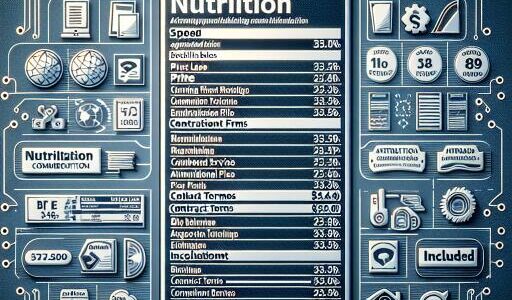Maximizing ETL Efficiency with SSIS: Proven Techniques
The task of moving data from multiple sources into a structured format for analysis is handled through a process known as Extract, Transform, and Load (ETL). As the cornerstone of many data warehousing solutions, ETL consists of three major steps: extracting data from source systems, transforming it into a format suitable for analysis, and loading it into a data warehouse or data mart.
SQL Server Integration Services (SSIS) is one of the leading tools used in crafting and managing enterprise-scale data warehouses. Due to the massive volumes of data processed, ensuring optimal performance is imperative for system architects and database administrators.
This article outlines strategies to enhance ETL performance with SSIS. We categorize these strategies into design-time practices and configuration adjustments for better execution efficiency.
Streamlining Data Extraction
SSIS can perform parallel data extraction using Sequence Containers within the control flow. Designing your package to fetch data from independent tables or files concurrently can significantly cut down execution times.
It’s also crucial to extract only necessary data sets. Avoid loading all available information from a source just on the off chance it might be needed later. This not only saves network bandwidth and system resources but also enhances overall performance. If the system’s criteria frequently change, a metadata-driven ETL approach might prove more effective than indiscriminately pulling all data.
Efficient Use of Transformation Components
SSIS includes a plethora of transformation components designed for complex ETL tasks. However, inefficient use can slow down performance. These components are synchronous or asynchronous, with the latter potentially introducing more overhead. Prefer synchronous transformations when possible, and manage property values judiciously when asynchronous transformations are necessary.
Limiting Event Handlers
Event handlers within SSIS packages allow for monitoring and responding to specific occurrences during execution. However, excessive event tracking can introduce unwanted overhead. It’s vital to determine the real need for event handlers on a case-by-case basis to ensure they don’t dampen performance.
Optimizing Table and Index Management
When dealing with substantial volumes of data transfers, the process can be hindered by heavy insert, update, and delete operations, particularly if destination tables are heavily indexed. Such indexes can trigger extensive memory re-organizations, negatively affecting ETL throughput.
If high volumes of Data Manipulation Language (DML) operations impact performance, reconsider the ETL design strategy. One way is to temporarily drop clustered indexes during execution and rebuild them afterward. Explore alternate approaches as per specific requirements to maintain seamless operation.
Configuring Parallel Task Execution
SSIS provides properties such as MaxConcurrentExecutables and EngineThreads for controlling parallel execution. MaxConcurrentExecutables controls the number of tasks running concurrently, and EngineThreads defines thread counts for tasks. Tuning these properties according to system resources can significantly enhance ETL performance.
Optimizing Data Access Options
Configure the Data Access Mode property in the OLE DB Destination component for faster data insertion. While the “Table or view” mode inserts records individually, utilizing the “Table or view – fast load” option facilitates bulk operations, boosting speed significantly.
Batching and Transaction Settings
Adjust properties like Rows per Batch and Maximum Insert Commit Size within the OLEDB Destination to manage tempdb and transaction log performance. With default settings sending all data as one transaction, congestion can occur. Setting a positive integer to partition data into smaller, manageable batches can alleviate these pressure points, enhancing overall efficacy.
Utilizing SQL Server Destination
For data loads into a local SQL Server, using the SQL Server Destination in your data flow is recommended. It capitalizes on the SQL Server bulk insert capabilities, thus speeding up the process more than alternative methods, and affords flexibility with data transformation and trigger management.
Avoiding Implicit Type Casting
Data originating from flat files is often read as strings, including numeric values, which strains buffer memory during transformations. For improved performance, convert numeric columns to appropriate data types upfront, minimizing unnecessary memory consumption and maximizing the SSIS engine’s processing capacity.
In summation, SSIS provides ample opportunities to fine-tune ETL processes to achieve peak efficiency. The strategies outlined can substantially uplift performance, whether you’re developing new systems or enhancing legacy infrastructures. By methodically addressing these areas, you can ensure that your ETL processes run smoothly, maximizing both throughput and reliability.










